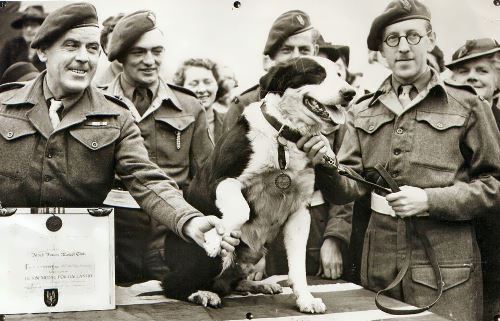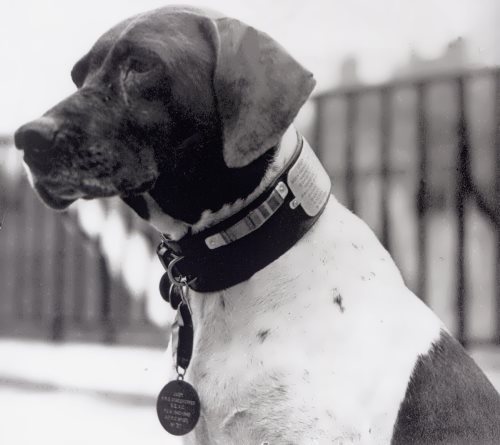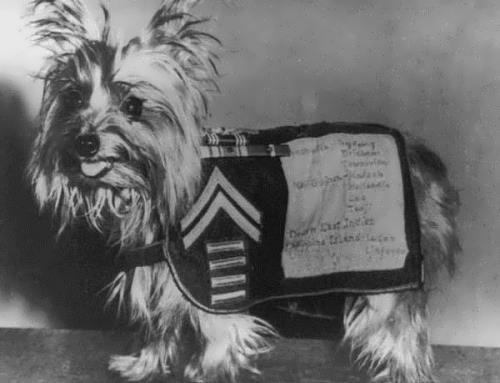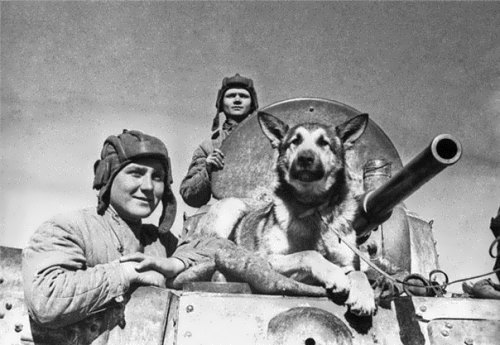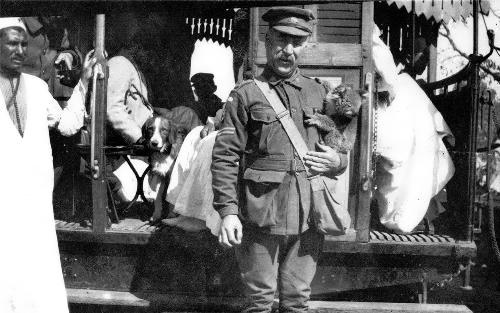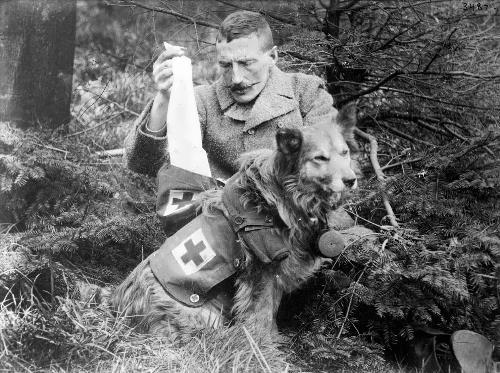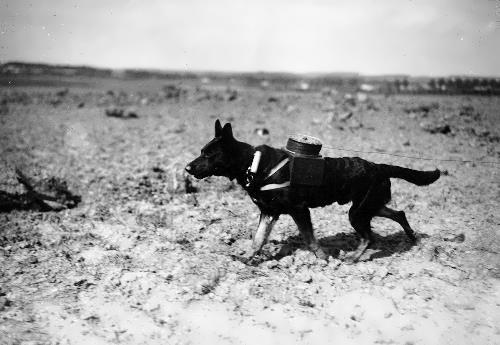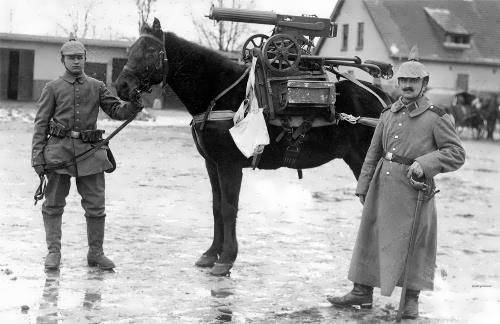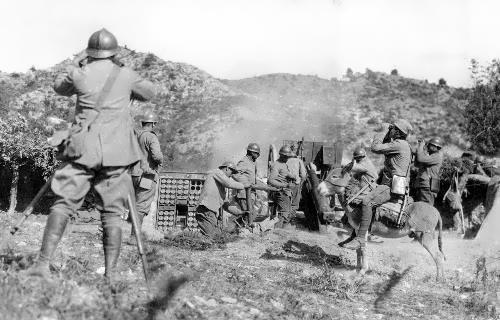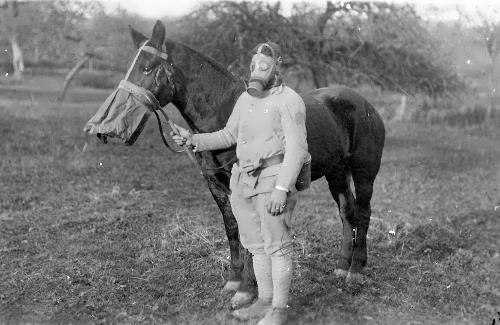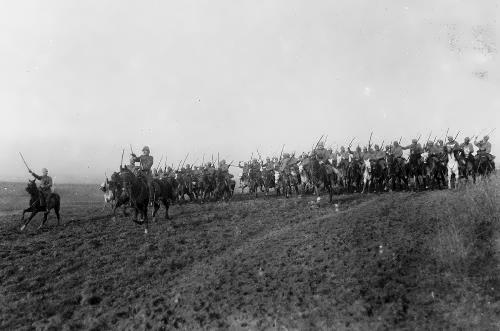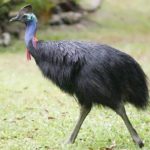Animals in War
Millions of people have died in the two World Wars — but millions of animals have too.
More than eight million horses died in the First World War alone. They carried men to war, delivered ammunition and equipment.
Thousands of pigeons were used as carriers during the First and Second World Wars. They delivered important messages and also worked as ‘photographers.’ Flying at a mile a minute, these brave birds saved countless lives.
Mules were used for transport in the impenetrable Burmese jungle. Even camels and elephants took part in battles.
Dogs served in both World Wars. They carried secret messages, laid telegraph wires, sniffed out mines, dug out bomb victims and even made parachute jumps! During the Blitz, dogs used to wake up their owners and take them to the shelters when they heard the sirens.
Animals Heroes
Rob the Paradog
He became a real hero during the Second World War. Rob served with the Special Air Service on top-secret missions in Africa and Italy. During his wartime career, he made more than 20 parachute jumps!
Zhuchka the mine-detector
Russian dog Zhuchka found 2,000 mines in 18 days. Dogs could sniff out mines made of metal, plastic, wood and glass. Mine dogs were trained to sniff out a mine and then sit down while their masters cleared it.
Judy the pointer
Judy served on a war ship in the Far East. When her ship was torpedoed, she saved her crew from thirst by finding fresh water. When they were captured, Judy spent two years as a prisoner of war in Sumatra. She survived several attempts by the Japanese to shoot her and was liberated in 1945.
Sheepdog Sheila
Sheila was the only ‘civilian’ animal to be awarded a medal. In December 1944, an American plane crashed in a snowstorm. Sheila found the survivors.
Beauty the Terrier
Beauty, a wire-haired terrier belonging to Bill Barnet, led an animal rescue squad in London. She had found 63 animals.
Simon the cat
Simon was the only cat to get a medal. In April 1949, the ship was held captive on the Yangtse River. For 100 days Simon the cat comforted the terrified young crew and entertained them with his amazing rat-catching skills. When the crew returned home, Simon became a celebrity.
Sergeant Stubby was the most titled and famous dog of World War I, and the only one dog in the history with the rank of sergeant. Stubby found wounded soldiers – he ran to them and barked until the military doctors came. By the end of the war Stubby participated in 17 battles.
Little Hero Smoky
She was one of the most famous dogs of the Second World War. The “big” hero weighed only four pounds (about 1.8 kg).
In 1944, Smoky was found by American soldiers in the jungles of New Guinea, in an abandoned foxhole. Corporal William Wynn from Cleveland bought the dog for 2 Australian pounds (about $ 6.44 at that time). Smoky endured 150 air raids in New Guinea, and the typhoon in Okinawa. She received eight battle stars and earned the rank of corporal.
William Wynn called Smoky – ‘Angel of the foxhole’. She felt the beginning of kamikaze attacks and saved nine people.
The dog, nicknamed Djulbars, a veteran of World War II, was the legendary mine detection dog. From September 1944 to August 1945 he took part in mine clearance on the territory of Romania, Czechoslovakia, Hungary and Austria and found 7468 mines and 150 shells. Djulbars was awarded the Medal for Battle Merit on March 21, 1945.
In 1946 Djulbars, along with his instructor Dina Volkats, starred in the feature film White Fang, based on the novel by Jack London.
There is a very special monument in London. It is dedicated to the brave animal heroes who have served and died in wars and conflicts.
Designed by British sculptor David Backhouse, the Animals in War Memorial shows two mules, a horse and a dog, and remembers other animals – dolphins, pigeons, elephants… and even glow worms (WWI soldiers used them to read maps and letters in the dark trenches).
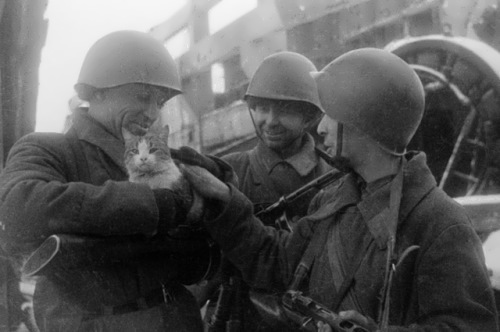
The commander of the 13th Guards Division Alexander Rodimtsev (center) with the soldiers and a cat. 1942, Stalingrad
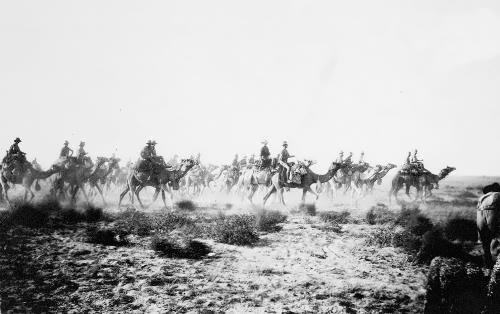
Australian troops on camels, 1917. (Photo Australian official photographs, State Library of New South Wales)
Animals in War
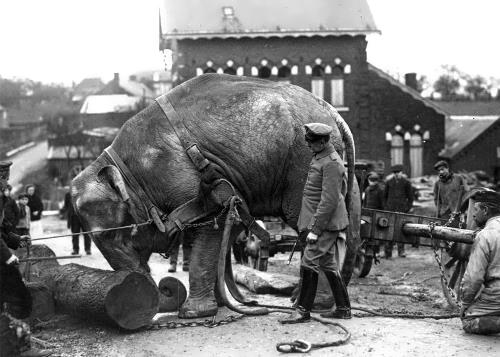
German soldiers in France used an Indian elephant at the zoo to drag logs, 1915. (Photo Nationaal Archief)

On May 9, 2003 the monument to a man with a gun and his faithful friend – the dog was erected in Ukraine.

